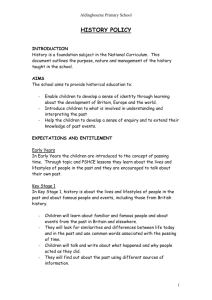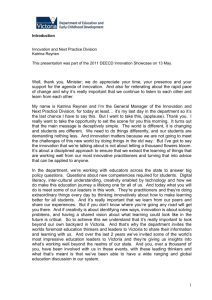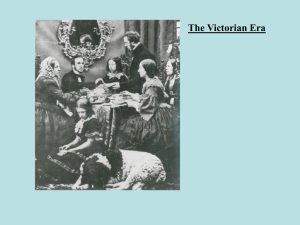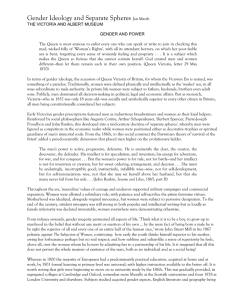Victorian England 1832-1901 - North Warren Central School
advertisement
Victorian England 1832-1901 Named after Queen Victoria When 18 year old Princess Victoria became Queen in 1837 no one dreamed she would reign for the rest of the century for another 64 years. Victorian Prosperity • Country becomes Urban (cities) • Elite enjoy the development of new machinery and new work methods. • Poor are the underpaid workforce consisting of adults and children living in wretched poverty. • By 1850 half the country's former peasants were squashed into Britain's cities. The growth of industry, the building boom, the swift population spurt and spread of the railway changed the character of Britain too rapidly for many to understand. The Railway – A symbol of Progress • The railways moved goods, foods and people faster than canals or horse drawn wagons. • The greatest factor in transforming Britain into an industrial nation. • Lives of millions were changed as suddenly the masses were able to travel further than ten miles in one direction. The Rich Class • enjoyed entertaining in their lavishly decorated homes – They associated clutter of ornamentation and showy display with wealth and so crammed their homes with furniture, knick knacks and pianos. Society and Social Class • In church the higher classes sat at the front in reserved pews and lower classes at the back. • The wives of wealthy industrialists were clothed in prominent finery as they were the social representatives of their husbands. • A new social class emerged: the middle class. An outward display of wealth through clothing and possessions . Work houses and Poor Law • The Poor Law Amendment abolished systems of poor relief that had previously existed, replaced by workhouses. • The treatment in a workhouse was little different from that in a prison leaving many inmates feeling that they were being punished for the crime of poverty. The Poor Class • In a poor family—all worked—parents and children. Their were no child labor laws. • Very few poor children were allowed an education as this would interfere with their labor time. Working Conditions • Millions of workers lived in slums or in vacated old decaying upper class houses. The occupants of slums had no sanitation, no water supply, no paved streets, no schools, no law or order, no decent food or clothing. • Many now had to walk miles to factories to work beginning at 5.30.a.m—never less than ten. The brutal degrading conditions were so awful that drunkenness and opium taking was common as homelife had so little to offer



